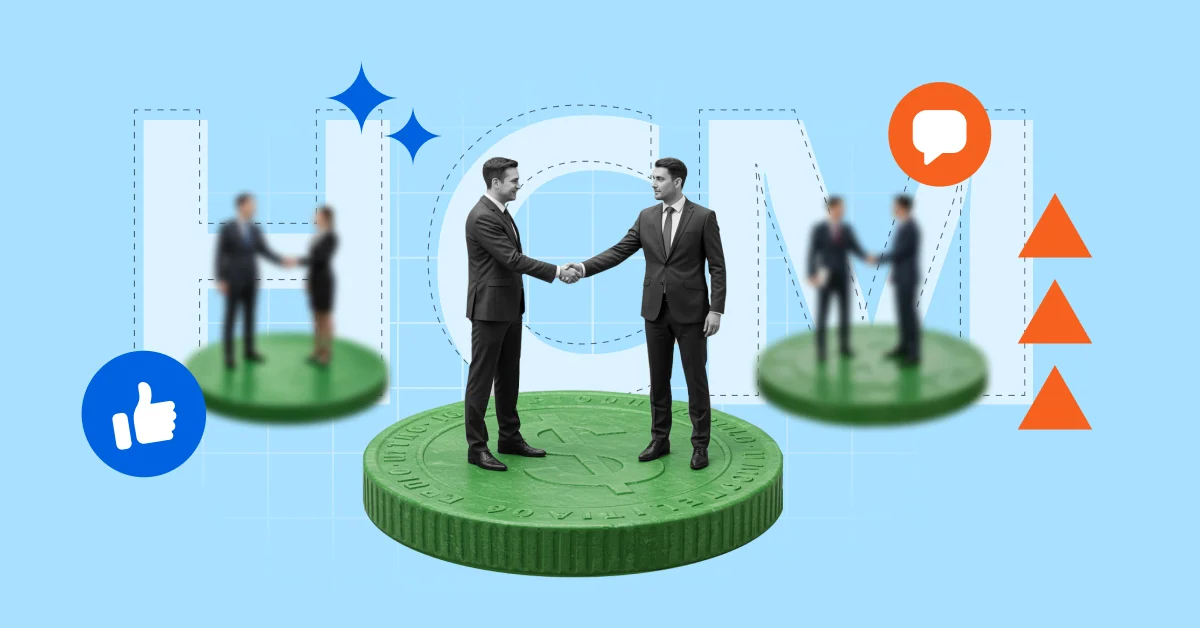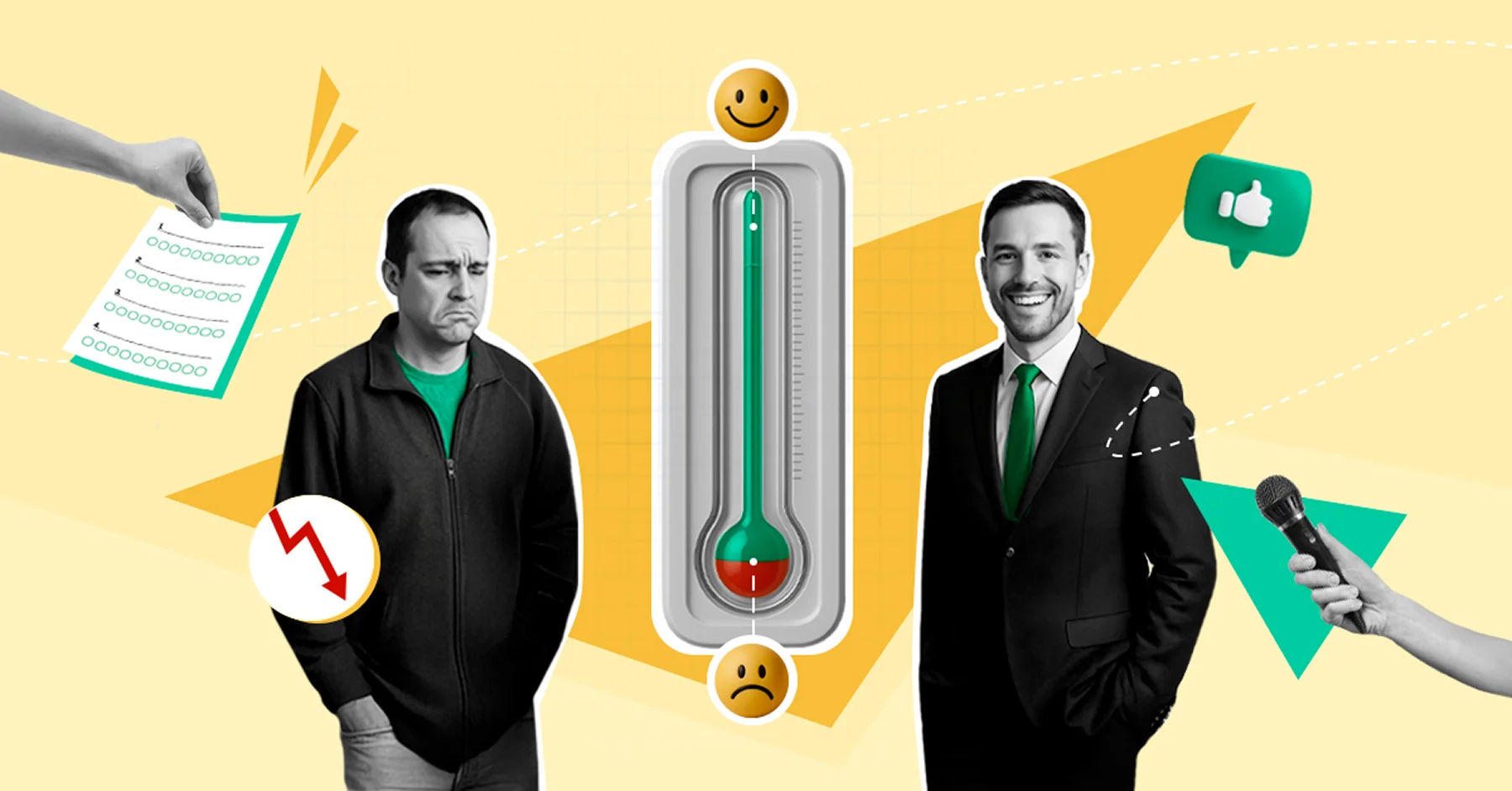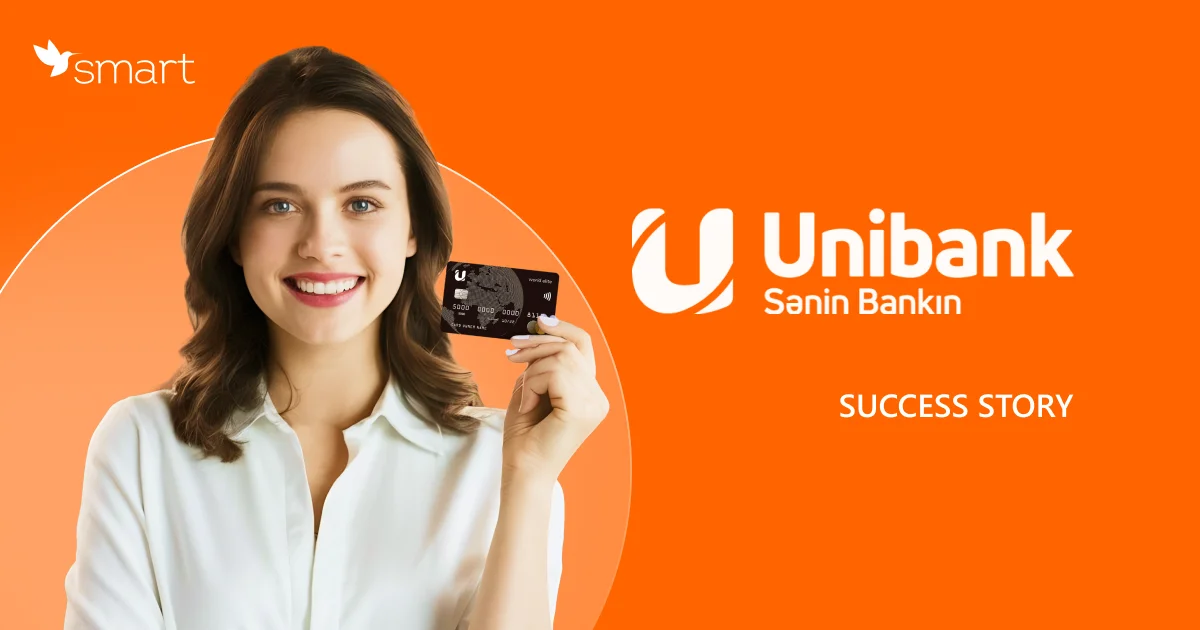The way your employees feel is the way your customers will feel.
A successful investor never views assets solely as numbers — they assess liquidity, growth potential, strategic impact, and the ability to deliver long-term value. The same approach applies to human capital management, where, instead of bonds and stocks, you work with professionals, teams, and expertise that generate value every day. Employees are not just a resource — they are strategic assets that drive operational stability, innovation, and brand reputation.
According to McKinsey & Company research, companies that invest in employee productivity are 4.2 times more likely to outperform their competitors. On average, their revenue grows 30% more, and their employee turnover rate is five percentage points lower. In other words, when you invest in people, it pays off in profitability and stability.
To effectively manage such a valuable “investment portfolio”, modern businesses use specialized platforms like HRIS, HRMS, or HCM. Let’s take a closer look at how they differ, what business challenges they help solve, and how to choose the solution that best supports your company’s growth and human capital development goals.
What Is an HCM Platform, the Core Solutions for Human Capital Management, and How They Work Together
HCM (Human Capital Management) is a strategic approach to managing personnel that covers the full employee lifecycle within a company — from hiring to development, motivation, and exit.
Within this lifecycle, an HCM system is a software platform that brings all human capital management processes into a single digital environment. It automates HR administration and payroll, enables deep analytics, and supports talent management, skill development, workforce planning, and a culture of growth within the team. An HCM system provides tools for employee engagement, surveys, competency assessments, optimized recruitment, and effective onboarding of new hires.
The main goal of an HCM platform is to help the company create a supportive environment where every employee has access to the opportunities and resources that match their needs and ambitions. Human Capital Management is not a monolith — it’s a flexible system that can consist of several key solutions, depending on the organization’s needs.
HRIS: The Digital Foundation of Human Capital Management
HRIS (Human Resource Information System) is the component within an HCM system responsible for centralized storage and management of employee data.
Key functions of HRIS include:
- Centralized storage of personnel data.
- Management of company structure and staffing list.
- Maintaining employee personal files.
- Time and attendance management: tracking schedules, vacations, sick leave, business trips, and more.
- Management of HR documentation.
- Basic reporting and internal company analytics.
HRMS — Expanded Capabilities for Talent Engagement and Development
HRMS (Human Resource Management System) is an enhanced HRIS that includes talent management modules — in other words, HRMS = HRIS + Talent Management. This combination covers a broader scope of employee interactions, from recruitment through development and evaluation.
Key functions include:
- Recruitment management: hiring, selection, onboarding.
- Employee performance assessment.
- Career growth planning.
- Training and skills development.
- Compensation management, etc.
Talent Management — Building a Strong Team from Within
The Talent Management component in an HCM system provides tools for a strategic approach to people. It focuses on identifying, developing, and retaining talent within the team. Companies that systematically work with talent don’t just search for people externally — they grow them internally.
Main capabilities:
- Designing development programs for various roles and levels.
- Identifying employee potential (HiPo, succession planning).
- Managing internal mobility (planning and coordinating employee transfers within the company).
- Ensuring a transparent feedback system.
Payroll — Automating Salary and Tax Calculations
Payroll solutions handle all calculations related to employee compensation. They can integrate with HRIS and accounting systems to provide:
- Automated salary calculation in compliance with legislation and internal policies.
- Optimization of tax, contributions, and benefits accounting.
- Generation of reports for tax authorities and other agencies.
- Integration with banks for streamlined payments.
WFM (Workforce Management) — Efficient Work Time Planning
WFM solutions help effectively allocate resources such as time, workload, and employee availability. This system is especially critical for companies with shift work, large teams, or seasonal fluctuations.
Key functionalities of WFM include:
- Automated creation and approval of shift schedules.
- Tracking of actual hours worked.
- Automatic workload balancing.
- Forecasting staffing needs.
- Overtime calculation, etc.
Analytics and Reporting — A Clear View of the Team in the HCM System
HR analytics is one of the most important components of a modern HCM platform. It acts as the system’s eyes. Analytics helps uncover the unseen and enables fact-based decision-making. Without analytics, management is intuitive; with analytics, it becomes informed and proactive.
Modern analytical tools provide:
- Automated dashboard creation with key HR metrics.
- Various reports on turnover, engagement levels, performance, and more.
- Comparative analysis of company departments.
- Risk detection: burnout, insufficient potential, weak leadership.
- Accurate data-driven forecasting.
- Use of artificial intelligence (AI) to identify patterns and offer recommendations for optimizing workforce management, helping to respond promptly to challenges and make more effective strategic decisions.
Thus, an HCM platform is more often a builder composed of separate components. For example, a basic HCM can be assembled by combining an HRIS, a payroll solution, and a workforce management (WFM) system. This configuration covers the essential processes: recordkeeping, payroll, and workload management. If Talent Management modules are added to the HRIS (thereby creating an HRMS), and then Payroll and WFM are integrated, the result is a more comprehensive HCM platform capable of covering the entire employee lifecycle. This way, a company can flexibly build its HR ecosystem — from a basic level to an advanced one — gradually adding the necessary functionality.
Alternatively, a ready-made comprehensive solution can be chosen that unites all key modules into a single digital ecosystem. This is exactly what SMART HCM & LMS from SMART business offers—a modern HCM platform that already contains everything needed for complete enterprise human capital management. It covers recruiting, onboarding, performance assessment, goal setting, skill and competency development with personalized plans, learning management, event administration, motivation through gamification, and self-service portals for employees and managers alike. All of this comes with real-time analytics in a unified interface, without complex integrations or fragmented systems. SMART HCM & LMS enables building a holistic, clear, and scalable HR architecture that drives team and business growth.
How Digitalization Transforms Human Capital Management: 10 Tangible Benefits
Effective human capital management delivers measurable results both at the team level and in overall business performance. Digital solutions help make this process not only transparent and systematic but also flexible, personalized, and scalable. Instead of manual routine — automation. Instead of guesswork — data. Instead of reactive problem-solving — proactive planning.
Here are ten key benefits businesses gain by digitalizing HR management with the modern HCM system SMART HCM & LMS:
- Increased Productivity — HCM solutions help employees better understand their goals, receive relevant training, and clearly see their own development path, boosting individual effectiveness and overall performance.
- Reduced Turnover and Increased Loyalty — tools for feedback, development, motivation, and growth foster a sense of value, encouraging employees to stay with the company longer.
- Optimized Recruitment Costs — HCM solutions enable filling some vacancies through internal talent pools and significantly reduce costs related to hiring external candidates. Automation tools — from job posting to candidate evaluation — speed up the process and ease the HR team’s workload.
- Real-Time Transparency and Control — HCM platforms provide HR professionals and managers with analytics tools to monitor team status, identify risks, and make informed decisions based on up-to-date data.
- Higher Employee Engagement — digital tools for surveys, feedback, recognition, and motivation management create a deeper connection between employees and the company.
- Stress-Free Onboarding — systematic onboarding ensures a smooth start in a new role, lowering the risk of early turnover.
- Synergy Between HR and Business — when all HR processes run smoothly within one system, HR shifts from a “service function” to a strategic partner in achieving business goals.
- Scaling Without Chaos — HCM systems allow quick adaptation of HR processes to changes in company structure, size, or goals while maintaining stability and quality.
- Stronger Employer Brand — a digital environment where everyone feels supported and sees opportunities for growth builds a strong market reputation and attracts the right talent.
- Culture of Continuous Development — HCM platforms help embed learning and growth into daily work, rooting a development culture deeply in the company’s DNA.
Benefits of Modern Cloud-Based HCM Systems

Today, companies need solutions that easily adapt to change, don’t require complex infrastructure, and ensure stable performance from anywhere in the world. Cloud-based HCM platforms meet all these requirements. They offer:
- Access from anywhere — A cloud HCM system operates online, providing HR teams, managers, and employees with constant access to essential data and tools regardless of location. This is especially important for modern companies that are no longer tied to a physical office. Cloud architecture supports the new reality of “anytime, anywhere” work.
- Easy scalability — Opening a new branch, expanding headcount, or entering a new market? A cloud HCM system can quickly adjust to organizational changes without the need for costly infrastructure upgrades.
- Regular feature updates — Most modern cloud solutions support automatic updates from the vendor or developer. This means the company always has access to the latest tools without additional costs or downtime.
- Reduced IT maintenance costs — There’s no need to manage servers or configure backup systems — all of that is included in the cloud service.
- Security and compliance — Cloud solutions today are designed to meet the highest security standards, especially since they store and process sensitive personal and corporate data. For example, SMART HCM & LMS, built on Microsoft technologies, ensures data protection in line with international standards. It uses advanced encryption protocols, multi-factor authentication, and strict access controls to guarantee data security and confidentiality.
- Improved user experience for employees — An intuitive interface, self-service functionality, and quick access to relevant information all contribute to higher user satisfaction and engagement with the system.
The Future of AI in Human Capital Management
Artificial intelligence has already become a part of everyday work across many industries — from finance and marketing to healthcare and manufacturing. AI in HR helps automate routine tasks, analyze large volumes of data, and support informed decision-making. This technology is increasingly shaping the field of Human Capital Management as well — AI is being actively integrated into HCM systems, transforming how HR teams operate and interact with employees through chatbots and intelligent agents.
What AI already enables in HCM:
- Automated recommendations for boosting engagement and retaining top talent.
- Turnover prediction at the team or department level.
- Content generation for job postings, training materials, or personalized development plans.
- Optimization of schedules and workloads using predictive analytics.
Where is the “HCM + AI agents” trend heading?
AI agents in HR are not a distant future — they’re already being implemented and delivering real benefits to businesses. These include:
- Recruitment agents that independently handle the initial candidate screening and build shortlists.
- Leadership coaches that analyze team interaction dynamics and help create individual development plans, including for leadership skills.
- Virtual HR consultants that employees can turn to with any questions — from vacation to learning opportunities.
AI in HCM brings a new level of personalization, efficiency, and adaptability — unlocking the future of HR. Importantly, intelligent agents are not meant to replace people but to empower them. They take over repetitive tasks, accelerate processes, and give HR professionals more time to focus on strategic people management.
Conclusion: SMART HCM & LMS — Digitalization Not Instead of People, but for People
When selecting an HR solution, it’s not just about the list of features — what matters is how well they work together and align with the real needs of the company. The more complex the processes, the simpler the tools for managing them should be. SMART HCM & LMS by SMART business is exactly that kind of solution.
The platform is a unified HR ecosystem that integrates with job portals to streamline job posting, automates candidate response handling, and significantly reduces time-to-hire. After hiring, it supports smooth onboarding with tailored scenarios, surveys, reminders, and more — reducing the burden on HR teams.
With SMART HCM & LMS, it’s possible to create a custom learning academy with interactive courses, track skill development, build individual growth paths, and maintain a structured approach to career planning.
The platform’s analytics component is powered by Power BI, which means always having up-to-date data in a convenient format — from turnover rates to insights on engagement, performance, vacancy closure, or training progress. Power BI allows large volumes of HR data to be visualized in clear, customizable dashboards — from high-level company metrics to individual employee details.
SMART HCM & LMS also includes gamification elements: point accumulation, an internal rewards store, recognition tools, badges, events, and interactive features — because motivation isn’t always about bonuses, but also about recognition and engagement.
SMART HCM & LMS is a solution that grows with the company — not the other way around. That’s the true strength of a modern HCM platform.
Want to learn how SMART HCM & LMS can support your organization? Submit a request — and SMART business experts will help you configure the best-fit solution based on your goals, team, and pace of growth!



